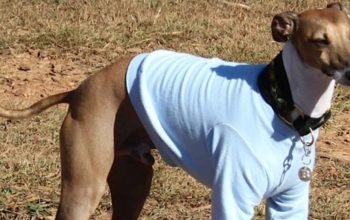Hearing that your dog might need surgery on their brain or spine can be one of the most frightening things as a pet parent. The words “neurosurgery” and “anesthesia” alone are enough to bring worry. But understanding the process can make it a lot less intimidating.
This guide will walk you through what actually happens during dog neurosurgery, step by step, so you know what to expect and how to prepare your furry friend for the best possible outcome.
Step 1: Initial Consultation and Diagnosis
The journey usually begins when your dog shows unusual symptoms—like sudden paralysis, seizures, head tilting, or loss of coordination. After your regular vet performs basic tests, you’re often referred to a veterinary neurologist for specialized evaluation.
At this stage, your dog will go through a complete neurological exam. The vet will assess reflexes, movement, and responses to determine whether the problem originates in the brain, spinal cord, or peripheral nerves.
If the issue points to the nervous system, imaging tests such as an MRI (Magnetic Resonance Imaging) or CT scan may be performed. These advanced scans provide a detailed look at your dog’s internal structures and help pinpoint the exact problem—whether it’s a slipped disc, tumor, or injury that may require surgery.
Step 2: Pre-Surgical Planning
Once the condition has been diagnosed, the surgical team begins planning. This stage involves reviewing test results, discussing risks and benefits, and determining whether dog neurosurgery is the safest and most effective treatment option.
The vet will explain the procedure in detail—what it aims to fix, how it’s performed, potential complications, and what the recovery process will look like.
Your dog may also need some pre-operative blood work to ensure they’re healthy enough for anesthesia. Medications might be adjusted, and you’ll likely be asked to withhold food for several hours before surgery to reduce the risk of nausea or aspiration.
Step 3: Anesthesia and Preparation
On the day of surgery, your dog will be admitted to the hospital. Before the operation begins, a veterinary anesthesiologist or technician will administer anesthesia to ensure your pet is completely asleep and pain-free during the procedure.
Your dog will be connected to monitors that track vital signs such as heart rate, oxygen levels, and body temperature. The surgical site—whether on the neck, back, or head—is shaved and sterilized. The surgical team wears sterile gloves, gowns, and masks to prevent infection.
This stage is all about safety and precision. Veterinary neurosurgeons are highly trained to handle delicate procedures involving the nervous system.
Step 4: The Surgery Itself
The exact surgical technique depends on the underlying condition. For example:
- Spinal surgery (for disc disease): The surgeon removes or repairs the damaged disc pressing on the spinal cord to relieve pressure and restore movement.
- Brain surgery (for tumors or injuries): The surgeon carefully removes the mass or repairs affected tissue to prevent further neurological decline.
- Nerve repair: In cases of trauma, damaged nerves are repaired or decompressed to restore normal function.
Every movement during dog neurosurgery is planned with extreme precision. The team uses specialized tools and magnification to operate on tiny structures safely. The procedure can take anywhere from 2 to 6 hours, depending on complexity.
Step 5: Waking Up and Post-Surgery Care
After surgery, your dog will be transferred to the recovery area and closely monitored as they wake from anesthesia. The vet team ensures breathing, temperature, and comfort are stable. Pain management is a top priority, so your dog will receive medication to ease discomfort.
Some dogs may stay in the hospital for a few days, especially if the surgery involved the brain or spine. During this period, the vet will monitor neurological function, mobility, and appetite. If needed, physical therapy may begin early to encourage healing and prevent stiffness.
Step 6: Home Recovery
Once your dog is discharged, you’ll get detailed instructions for at-home care. Recovery from neurosurgery can take weeks or months, depending on the condition. You may need to:
- Limit movement and keep your dog in a quiet, safe space
- Administer prescribed medications regularly
- Assist your dog with mobility or potty breaks
- Attend follow-up visits for checkups and progress evaluation
In some cases, physical rehabilitation therapy may be recommended to help rebuild muscle strength and coordination. Under your care and the vet’s guidance, most dogs gradually regain their normal routines.
Step 7: Follow-Up and Long-Term Outlook
Regular follow-up appointments are crucial after surgery. These visits allow the vet to assess healing, remove stitches (if any), and adjust medications. Follow-up imaging might also be done to confirm the surgery’s success.
The long-term prognosis depends on the underlying condition and how early it was treated. Many dogs go on to live happy, active lives after neurosurgery, especially when their owners stay diligent with care and therapy.
Final Thoughts
Seeing your beloved pet go through dog neurosurgery can be emotionally challenging, but understanding the process helps reduce fear and uncertainty. Veterinary neurosurgeons combine advanced medical technology with precision and compassion to give pets the best chance of recovery.
The key is early detection—don’t ignore unusual signs like weakness, balance loss, or seizures. The sooner the problem is identified, the better the outcome. With modern surgical techniques, expert care, and your love, your furry friend has every chance to bounce back and enjoy life again.



